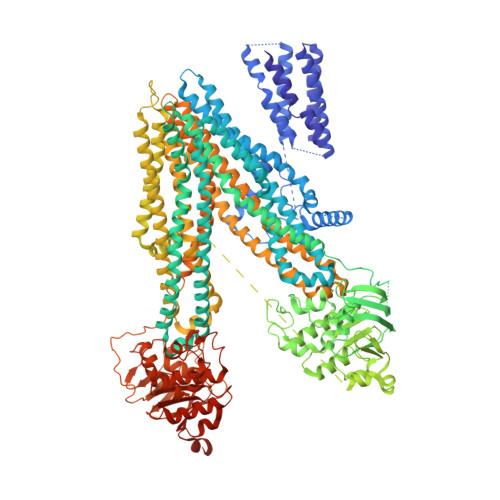Structural Basis of Substrate Recognition by the Multidrug Resistance Protein MRP1.
Johnson, Z.L., Chen, J.(2017) Cell 168: 1075-1085.e9
- PubMed: 28238471
- DOI: https://doi.org/10.1016/j.cell.2017.01.041
- Primary Citation of Related Structures:
5UJ9, 5UJA - PubMed Abstract:
The multidrug resistance protein MRP1 is an ATP-binding cassette (ABC) transporter that confers resistance to many anticancer drugs and plays a role in the disposition and efficacy of several opiates, antidepressants, statins, and antibiotics. In addition, MRP1 regulates redox homeostasis, inflammation, and hormone secretion. Using electron cryomicroscopy, we determined the molecular structures of bovine MRP1 in two conformations: an apo form at 3.5 Å without any added substrate and a complex form at 3.3 Å with one of its physiological substrates, leukotriene C 4 . These structures show that by forming a single bipartite binding site, MRP1 can recognize a spectrum of substrates with different chemical structures. We also observed large conformational changes induced by leukotriene C 4 , explaining how substrate binding primes the transporter for ATP hydrolysis. Structural comparison of MRP1 and P-glycoprotein advances our understanding of the common and unique properties of these two important molecules in multidrug resistance to chemotherapy.
Organizational Affiliation:
Laboratory of Membrane Biology and Biophysics, The Rockefeller University and the Howard Hughes Medical Institute, 1230 York Avenue, New York, NY 10065, USA.














